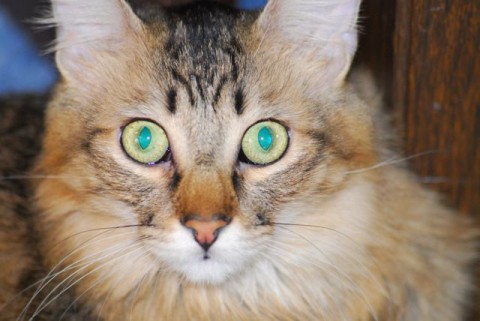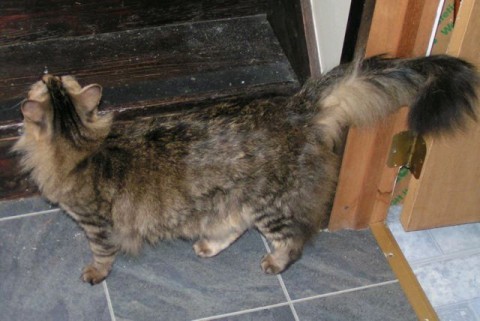We’ve all seen our cats get twitchy and hyperactive from time to time, however, occasionally, it’s not normal behavior for a cat. Some cats may suffer from a rare disorder known as feline hyperesthesia, or “twitchy cat syndrome.” According to Dr. Karen Becker, feline hyperesthesia causes the skin on your cat’s back to ripple uncontrollably, along with other problems.
Signs and symptoms of feline hyperesthesia
With feline hyperesthesia, your cat may turn towards his tail and lick frantically, or even bite at it, like he would if he’d just gotten a bug bite. He might also take off running suddenly and out of the blue, like something’s after him. This happens all the time, not just the sometimes that we’re all used to with “kitty chaos hour.”
Your cat might also suffer from twitches and even muscle spasms with this disorder, and he’ll lick and bite repeatedly at his back, tail, and even his hind legs, according to PetMD. His eyes may be dilated during an episode, and he’ll behave in an agitated manner. He may also be very intolerant of your petting and scratching his back and tail; that could be the biggest sign that there’s something more going on than normal “kitty chaos hour.”
PetMD says that symptoms appear and disappear in episodes, and that your cat will behave normally between episodes. A veterinary exam usually uncovers nothing – no neurological disorders or problems, or anything obvious that could cause feline hyperesthesia. However, your vet will probably see damaged hair follicles, which result from your cat’s violent licking and biting.
Diagnosis and treatment
Dr. Becker says that diagnosis of feline hyperesthesia first involves ruling out other causes, such as flea allergy dermatitis, or severe dry skin problems. Sometimes, your cat might actually have an underlying seizure disorder that’s causing the problem. Also, cats with feline hyperesthesia may have lesions on the muscles along their backs, which could cause the sensation your cat is desperately trying to get rid of.
Your vet should do a full blood workup, perform a physical, and do other tests as needed to rule out various causes. Feline hyperesthesia can only be diagnosed once all other problems have been ruled out.
Keep in mind that, just because you see your cat’s back ripple, and he suddenly takes off running sometimes, doesn’t mean he’s got feline hyperesthesia. You’ll need to keep an eye out for other symptoms, particularly intolerance to having his back touched and scratched, and baldness from over-grooming or pulling fur out. However, if your cat does have feline hyperesthesia, treatment involves reducing his stress as much as possible.




